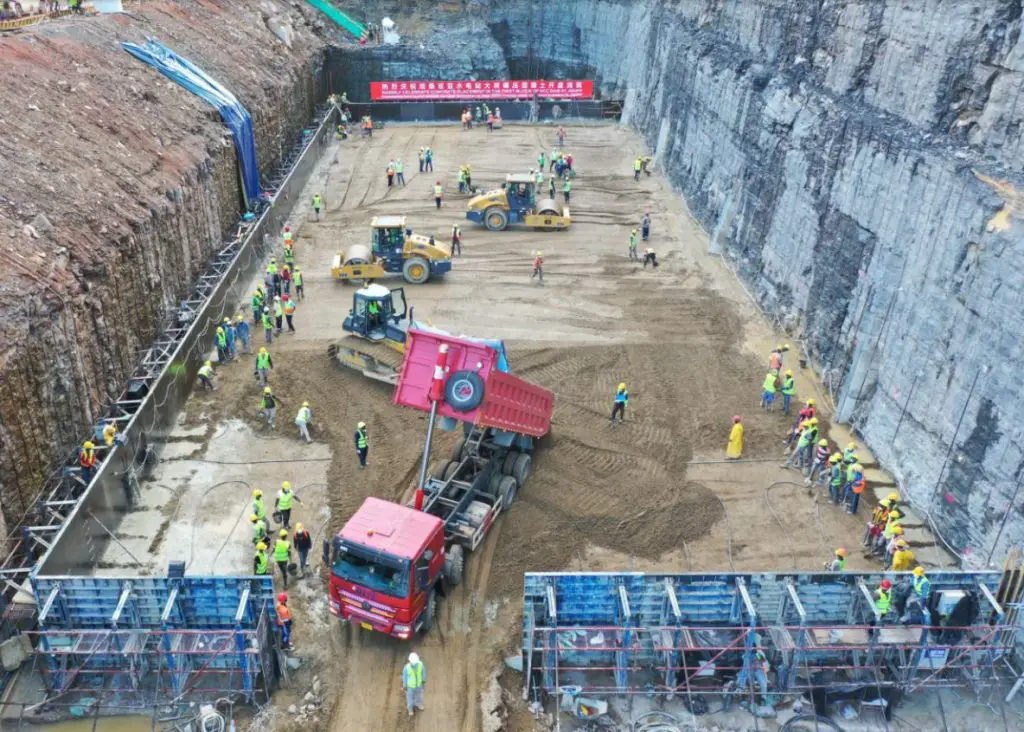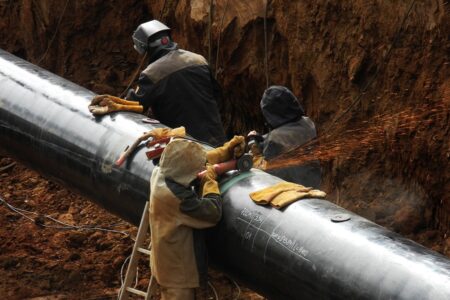An Egyptian consortium has confirmed that Tanzania’s Julius Nyerere Hydroelectric Dam’s main body construction along the Rufiji River is complete.
According to information from Tanzania Times, the consortium made of Arab Contractors and El-Sewedy reported to the Egyptian Cabinet of Ministers that much of the work on the dam is finished.
Further, it is reported that information about the completion of the main body of one of the largest hydroelectric dams in the region was circulated on Friday. Reports from Egypt note that the ongoing activity is preparing the site to retain water from the Rufiji River behind the dam.
- Tanzania’s total power installed capacity stand around is nearly 1,700 MW
- Julius Nyerere Hydropower Dam is one of East African largest dams and one of its kind
- Tanzania’s overall access to electricity stands at 37.7 per cent, according to the World Bank
“The process is expected to take around two months based on estimations of the flood this year. These preparations include installing and testing water gates on three levels in the body of the dam,” Tanzania Times reported.
The project was initially scheduled to be completed in June 2022. Still, the initial plan was cut short by a disruption in the delivery of some vital construction materials due to the COVID-19 pandemic (The Citizen).
READ: Tanzania: Energy solutions to solving water crisis
The ambitious dam
The Julius Nyerere Hydropower dam is an ambitious energy project and one of its kind across East Africa, with the capacity to generate 2,115 megawatts. The project cost $2.6 billion and is currently the most significant contract handled by Egyptian companies in Africa.
In August, it was reported by the Tanzanian Minister of Energy, January Makamba, that construction of the dam reached 67.18 per cent. The real work on the ground kickstarted in December 2018, which spanned out Tanzania’s government’s ambition to enrich its energy capacity from all fronts.
Further, the dam is 131 meters high and 1,025 meters long at the summit. The constructors managed to complete the tasks 687 days after the diversion of the river in November 2020 (Tanzania Times).
Tanzania’s electricity generation is comprised of several sources. Hence the dam stands to vitalize power availability and change the state of installed capacity. At least 48 per cent of Tanzania’s electricity is from natural gas, 31 per cent from hydropower and 18 per cent from petrol.
By 2021 Tanzania’s total power installed capacity stood at 1,605.86 MW, whereas during this year, Tanzania Energy Congress, Makamba noted that the capacity is around 1,700 MW.
READ: Tanzania’s Malagarasi Hydropower Project secures AfDB funding
However, on the side of the aisle, the average electricity consumption per capita in Tanzania is 108kWh per year, compared to Sub-Saharan Africa’s average consumption of 550kWh per year and 2,500kWh average world consumption per year (Tanzania Invest).
However, the demand for electricity in Tanzania is estimated to grow by 10–15 per cent per year. Thus, access to electricity for rural people stood at 69.6 per cent in 2021. According to the World Bank’s overall access or connectivity, the rate stands at 37.7 per cent.
The government of Tanzania aims to expand access to electricity to nearly all Tanzanians. To meet this demand, the government plans to increase Tanzania’s generation capacity to 10,000 MW in 2025 (Tanzania Invest).
The Tanzanian-funded energy project is extremely important to the welfare of power generation and the economy at large.











